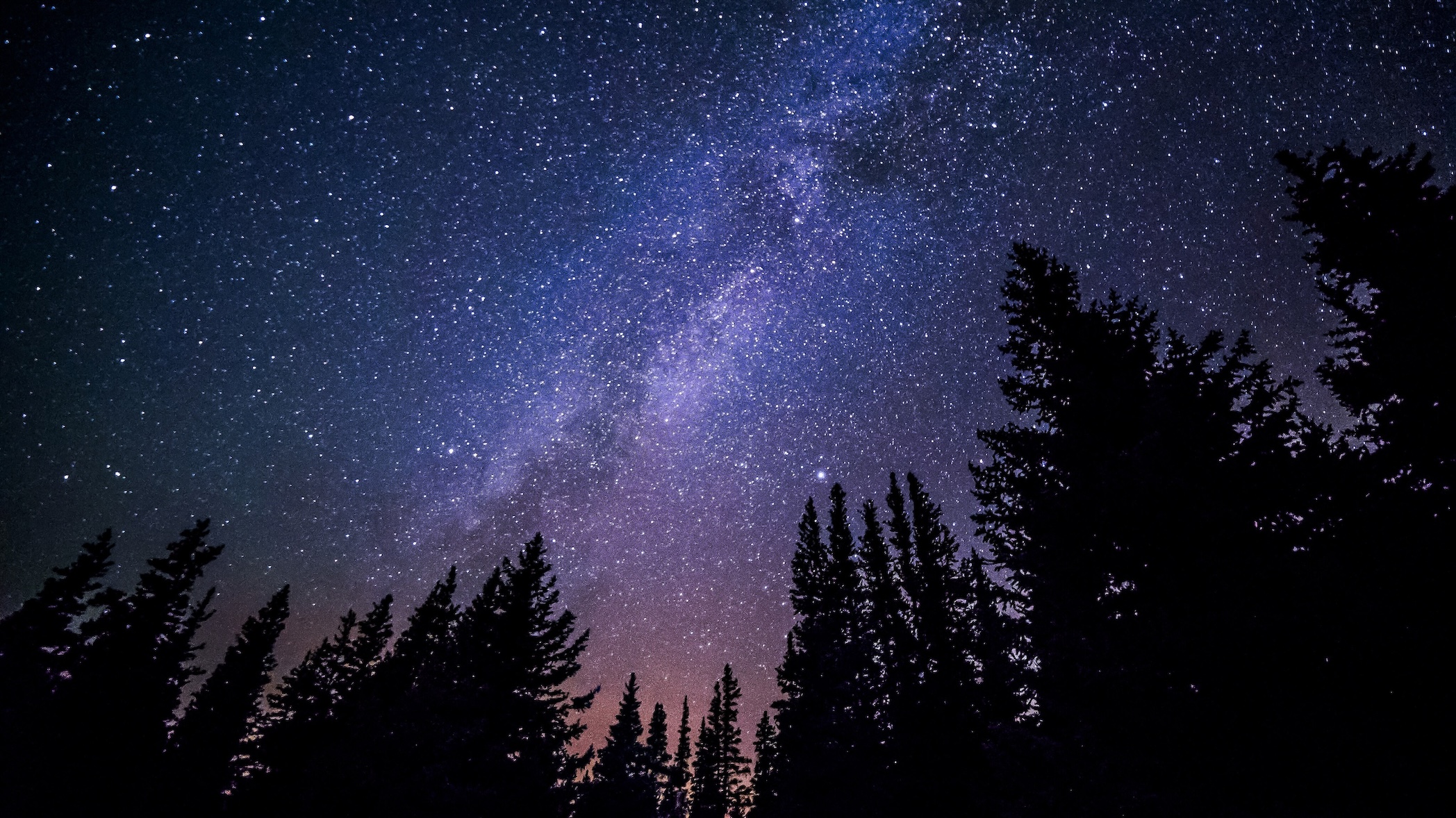
AS WE ENTER THE DARK DAYS OF WINTER, many of us feel like we are living through a dark time as well. But as Kamala Harris said in her concession speech, “Only when it is dark enough can you see the stars.” Our General Meeting on December 17 featured contemplative readings and music, along with periods of silence, to help us welcome the blessings of darkness. You can view a recording of the service on our YouTube Channel.
With the longest night of the year right around the corner, the gathering welcomed the darkness. Just as surely as our bodies need the night’s rest, the Earth needs this dormant period of winter. In the months when our part of the Earth is tipped away from the Sun, seeds lie beneath the ground, awaiting the warmth of spring. Trees stand bare, flowers die away, and grasses stop growing. In the midst of this drab season, evergreens remind us that this time is not about death, but is simply a different phase of life, as the Earth cycles round to a season when nature will again flourish with new life.
These winter days invite us to embrace the darkness and to balance our activism with rest and quiet reflection. In our winter celebrations, we engage the wisdom of ancestors through stories of how they survived difficulty. Through rituals of light, we look for signs of hope that, like the evergreens, promise a resurgence of life to come.
THE GATHERING OPENED WITH Morten Lauridsen’s beautiful song, “Sure on this Shining Night,” after which TAF co-facilitator Betsy Bennett greeted participants and welcomed the evening, using the traditional Jewish prayer Ma’ariv Aravim, “the God who brings on evening.”
The songs “Dark of Winter” and “O Beautiful Darkness” were paired with A Winter Prayer, by Joyce Rupp, to help us recognize that along with nature, “we are … terminal buds waiting in repose, to be energized in our vigilant dormancy.” May Sarton’s poem “The Invocation to Kali” reminded us that destruction and creation, death and birth all occur in darkness. The contemplative service closed with Irish priest and poet John O’Donahue’s blessing “For Light.”
Breakout groups considered questions about both darkness and light:
- Question #1: What causes you fear or stress in this dark time? How can you use the darkness to prepare for what comes next?
- Question #2: Where do you find light? How could you share light with others?
Following breakout groups, participants shared their appreciation of darkness and of silence as places of rest. Others noted the importance of working with others, and that they find light in community and in being outdoors, echoing Kamala Harris’s observation that the deep darkness makes the stars appear even more brilliant. Some named books that help them through difficulties, some of which are on our Reading List for Difficult Times. One person described their conversation as a group hug, despite it being mediated by technology over great distances.
The evening closed with Jan Richardson’s poem “Where the Light Begins” and a musical setting of the poem by Susan LaBarr, as we concluded our time of conversation, while continuing to move towards healing for ourselves and our broken world.
View the recorded service on our YouTube Channel.
For more reflections on darkness and light, see the recent “Going Deep” essay by TAF co-facilitator Betsy Bennett, and a reflection by TAF member Jane Ellen Nickell in our News & Views newsletter in December 2022.